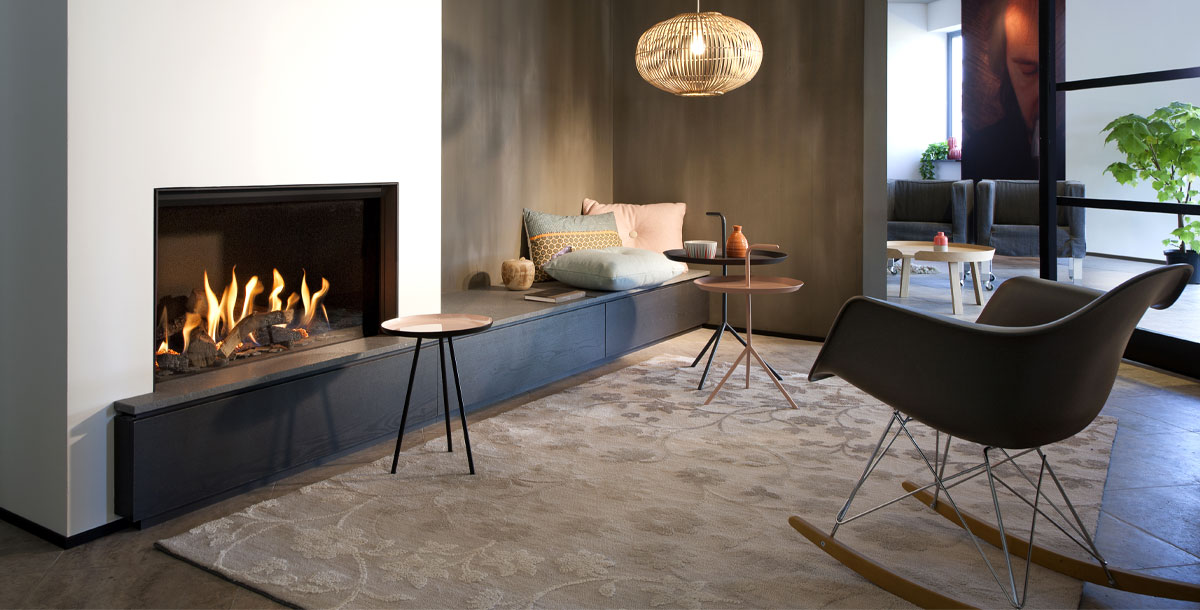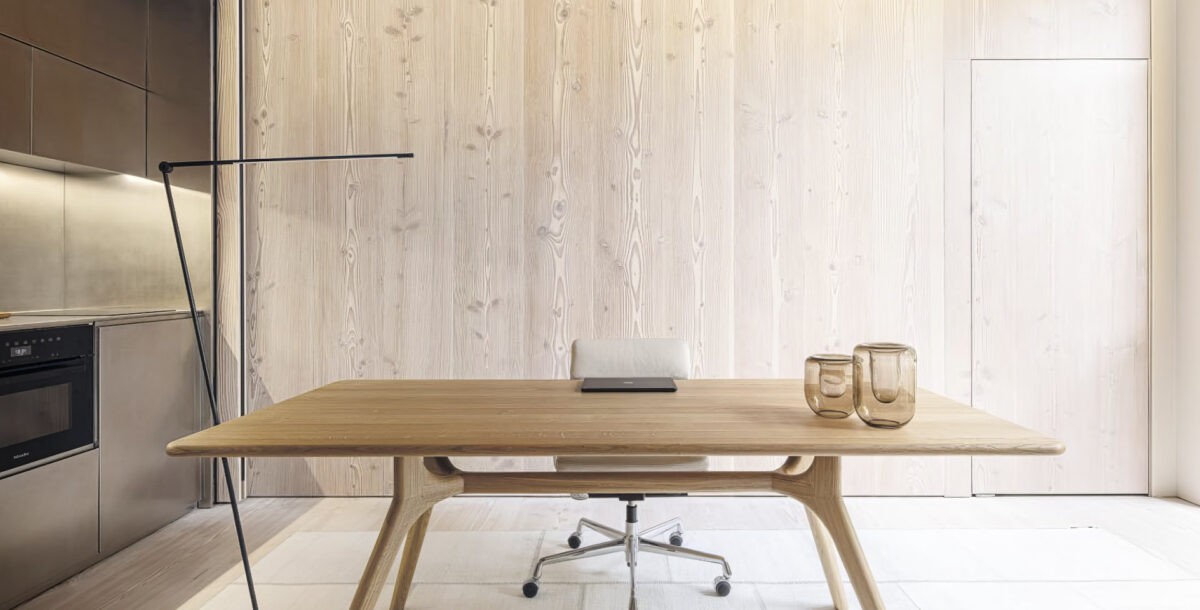Fireplaces: a buyer’s guide
Striking designs for a cosy home, whether it’s a major structural piece or a simple retrofit model
Whether you covet the crackle of a real fire or prefer the convenience of a gas or electric alternative, there are plenty of fireplace designs and fuel options available. To find out which type is suitable for your property, you’ll need to do some research. Then decide if your priorities are heat, aesthetics, energy efficiency or keeping your carbon footprint in check.
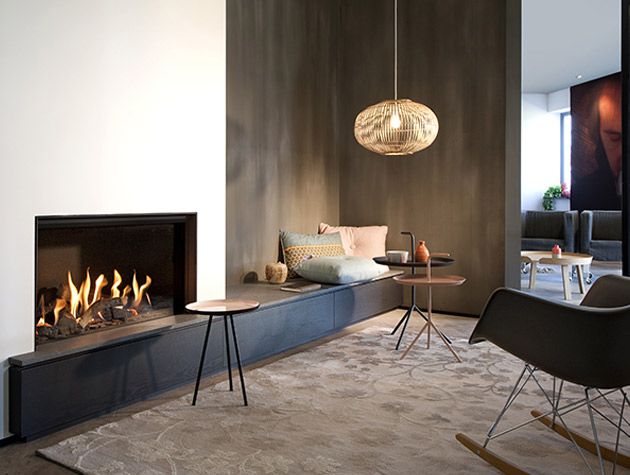
This Kal-fire glass-fronted model from Bespoke Fireplace Designs comes in a natural gas or LPG format
Fireplace design, fuel types and emissions
Your fireplace design will be chiefly led by the type of fire you want to have in your home. Most real fires require a chimney or flue, and if you’re renovating a period property, your house will likely already have a chimney. Of course, that doesn’t mean you need to go for a real fire. A traditional exposed brick-and-beam or stone structure can look just as striking with a modern stove fitted into it.
You will need to check what can be burnt where you live, as coal and wood is not permitted in smoke-control areas. Check with your council to find out if your home is in one.
Many of the more contemporary versions of real fires are gas fuelled and available with various flue options, as well as flueless models, although these aren’t recommended for basements or bedrooms. Bioethanol fires (also known as gel fires) don’t require a chimney or vent either and, although they have very low emissions, they can have high running costs.
However, bioethanol is generally considered a greener fuel. Produced from common crops, such as potato or corn, it gives a great output with a long burning time. Good ventilation is required, as burning bioethanol can cause condensation.
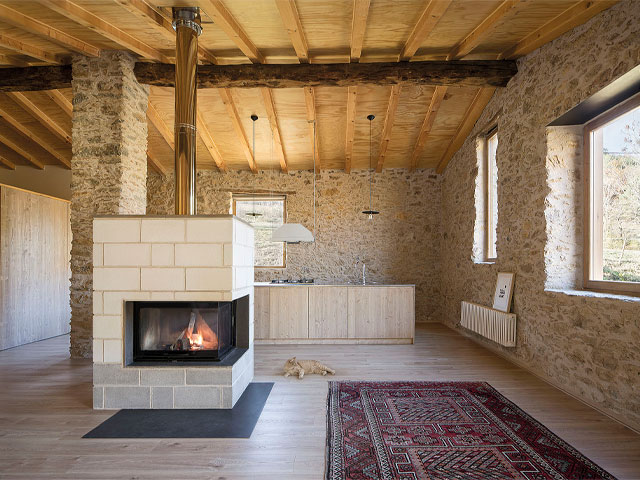
This 18th century barn conversion in Catalonia, Spain, combines the best of old and new with a contemporary fireplace design taking centre stage. Photo: Del Rio Bani
Energy efficiency
It would also be wise to consider the level of heat you need and fuel efficiency before considering aesthetics. Open-flame fires are only 15-20% efficient, while wood burners offer up to 90% efficiency, so long as you go for a good model and burn properly seasoned wood. Bear in mind that wood burning stoves are responsible for 17% of all small particle pollution (road transport is responsible for just 13%), so it’s important to ensure that yours is as energy efficient as possible.
Wood burning stoves must now meet EcoDesign criteria, which requires all newly designed appliances to have a minimum seasonal efficiency of 65%, and Stove Industry Alliance (SIA) stoves must have a minimum requirement of 75%. Many brands, including Arada stoves, include technology to burn off excess gases before they are released into the atmosphere. The Ecco Stove, which combines masonry heater and wood burning stove technology, provides up to 93% efficiency.
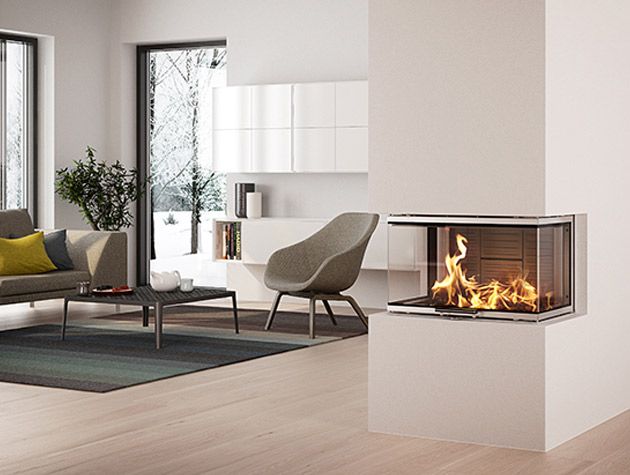
This contemporary fireplace design is ideal for zoning an open-plan space. The Rais Visio 3 from Robeys features a three-sided glass door and either a stainless-steel or black frame
Eco options
Gas stoves provide a convenient alternative to log-burning stoves. Conventional flue gas stoves require a chimney, but pre-fabricated flue systems are available. No chimney or vents are required for a balanced flue gas stove or fire. With a product like the Gazco Sheraton 5 Gas Stove, a twin-wall pipe vents directly to an outside wall, combining the traditional aesthetic of the classic wood burner with the convenience of a gas stove. Efficient gas flame technology offers an authentic display, with detailed logs and ceramic stones creating the look of a realistic wood burning fire.
An electric stove is a clean and simple heating solution that can still achieve a traditional log-burner aesthetic and be easily adjusted with a choice of fuel effects, flame and ember bed lighting settings. Unlike gas and wood fires, these are fume free and don’t create carbon monoxide and carbon dioxide. You don’t have to worry about whether or not you live in a smoke control area and you don’t need a chimney.
You also have a lot more choice over your fireplace design when it comes to electric fires. Choose from smaller fires that can hang on the wall, or larger landscape options that can be integrated into media walls, room dividers and bookcases.
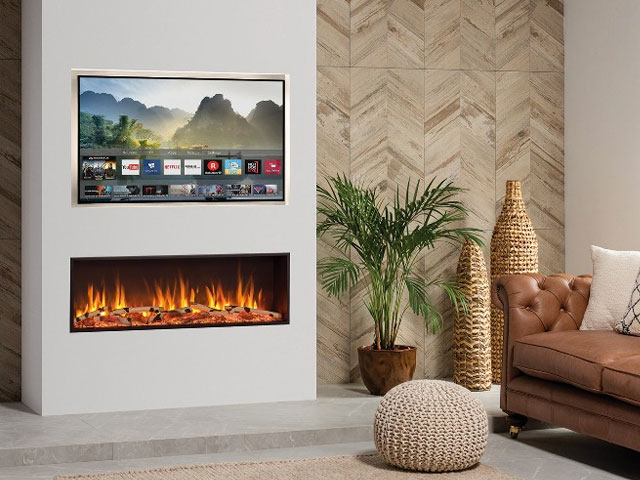
eStudio Electric Fires by Stovax/Gazco offer versatile fireplace design options
Fireplace safety and support
If you’re buying online, look out for the same after-sales and servicing support that you would from a showroom retailer, and check that a local installer is willing to fit the fireplace before ordering, as some will only work with their own products.
Alternatively, contact HETAS, the official body recognised by the government to approve biomass and solid-fuel heating appliances, fuels and services, as well as the registration of installers and serving businesses. It also has a list of registered chimney sweeps.
If you’re opting for a gas fire, your installer must be Gas Safe Registered and you may need to have your chimney lined. Although not always essential, it will make a traditional chimney safer and, by creating a smooth continuous surface, increase efficiency, along with preventing tar and smoke from leaking through cracks in the masonry. It will also improve the draw and help prevent carbon monoxide developing.
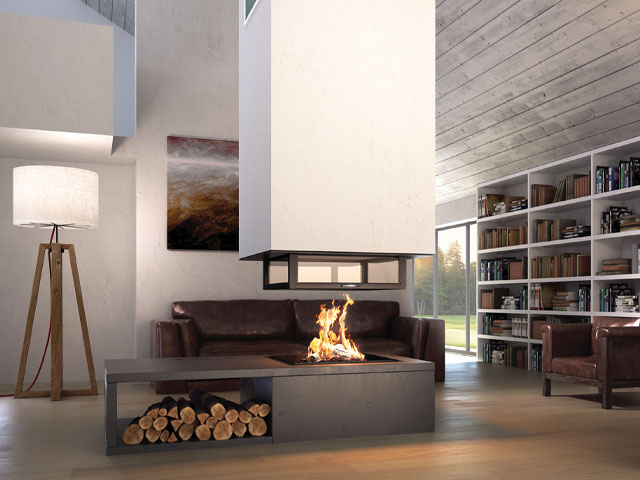
For a fireplace that creates a real focal point, consider a central wood burner like the Totem 4 Faces Suspendu from Diligence Fires
Check your chimney
Before fitting a real fire, it’s vital to have the chimney swept and assessed to ensure it’s in good order and meets current regulations. If you’re renovating an existing property, the type of chimney or flue already there may affect your choice of fire, so discuss your options with a professional installer.
‘All internal and external work on flues, chimneys and fireplaces is subject to Building Regulations and inspection,’ says Phil Cleaver, editor at fireplace.co.uk. ‘If you hire a member of a competent-person scheme, such as NACE, OFTEC and HETAS registrants, they will notify the local authority that work has been carried out to the required standard. It’s also advisable to employ the services of a chimney engineer for specific work.’ Bear in mind that a chimney needs to be at least 4.5m tall to ensure it draws properly.
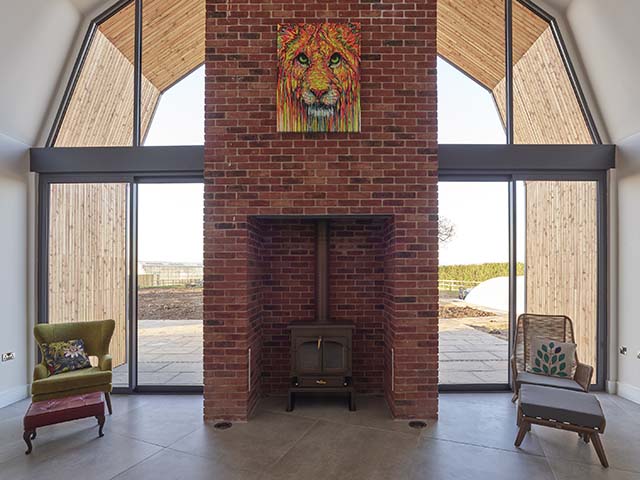
A wood burning stove with brick surround stands in the centre of the huge, glazed gable of the Grand Designs Dutch barn in Lincolnshire. Photo: Andy Haslam
Ventilation is key
Whatever fireplace design you opt for, ventilation is key. Always seek advice from a professional installer to make sure your fireplace has the correct ventilation and meets current Building Regulations. Solid fuel, wood and biomass-burning appliances are required to have a fixed, permanently open ventilator to provide their combustion air from outside the property.
Whatever style you choose, make sure you are happy with how the fireplace design looks when the flames are inactive, especially with the more contemporary models.

